Join us online every Thursday for #GOPCThreads, showcasing the research and expertise of Greater Ohio Policy Center.
GOPC Contributes to Newly Released Cleveland Tax Abatement Study
The study was led by nationally-recognized Reinvestment Fund, with assistance from Greater Ohio Policy Center, PFM Group Consulting, Neighborhood Connections and Leverage Point Development.
Trailblazing partnership yields new TOD in Cleveland neighborhood
By Maria Walliser-Wejebe, GOPC Project Associate
There are several reasons to be excited over the rollout of Aspen Place, the new multifamily housing development that will bring future residents of the Detroit Shoreway neighborhood in Cleveland greater mobility options while maintaining affordability. Developed, owned, and operated by the Detroit Shoreway Community Development Organization, Aspen Place is an example of transit-oriented development which capitalized on neighborhood assets and took advantage of innovative partnerships.
In a trailblazing partnership, DSCDO and Greater Cleveland RTA have joined forces to make this project a reality: DSCDO purchased the development site from RTA; entered into a parking agreement with the authority, and are currently negotiating a per-unit purchase of RTA transit passes, one of the first between RTA and a residential property owner. While DSCDO has completed multiple development projects in the neighborhood, Aspen Place represents the DSCDO’s first investment on Lorain Avenue. The 100% affordable project will provide 40 units ranging from one to four bedrooms.
The project follows the model of Transit-Oriented Development, a growing trend in creating vibrant and sustainable communities which leverage access to high-quality transit. Located on Lorain Ave, Aspen Place is immediately adjacent to the RTA Red Line W. 65th Street Rapid Transit Station, and is serviced by the Lorain Avenue bus line. Aspen Place is also part of the Detroit Shoreway EcoVillage project, ensuring high standards in energy and water efficiency, indoor air quality, and accessibility, meeting Enterprise Green Communities criteria. The EcoVillage project also aims to provide environmentally conscious, pedestrian-friendly design in all new development.
The variety of transportation options adjacent to the site will reduce commuting costs and expand mobility options for the future residents of Aspen Place, making this TOD model especially impactful for seniors and working class families who might not be able to afford car ownership. Adjacency to transit also allowed the project to reduce the amount of parking spaces required for the development, a feat which would have proved impossible on the one-acre lot without reducing the total number of units. The additional partnership with GCRTA to provide passes for each of the units for the full term of low-income housing tax credit equity will provide true affordability for future residents by reducing the combined burden of housing and transportation costs on household budgets. Together with the fact that this project represents infill redevelopment on previously vacant land, Aspen Place is a perfect example of small-scale TOD in an urban neighborhood.
Aspen Place was financed through funding from Enterprise Community Partners, KeyBank, the Ohio Housing Finance Agency, the City of Cleveland, Cuyahoga County, and the Finance Fund. DSCDO hopes the development of Aspen Place will anchor revitalization efforts along Lorain Avenue, while providing options for long-term affordability in the neighborhood.
See current construction and shots of the apartment interiors in the gallery bellow. The grand opening of Aspen Place is scheduled for Spring of 2019, check the Detroit Shoreway CDO website for more info.
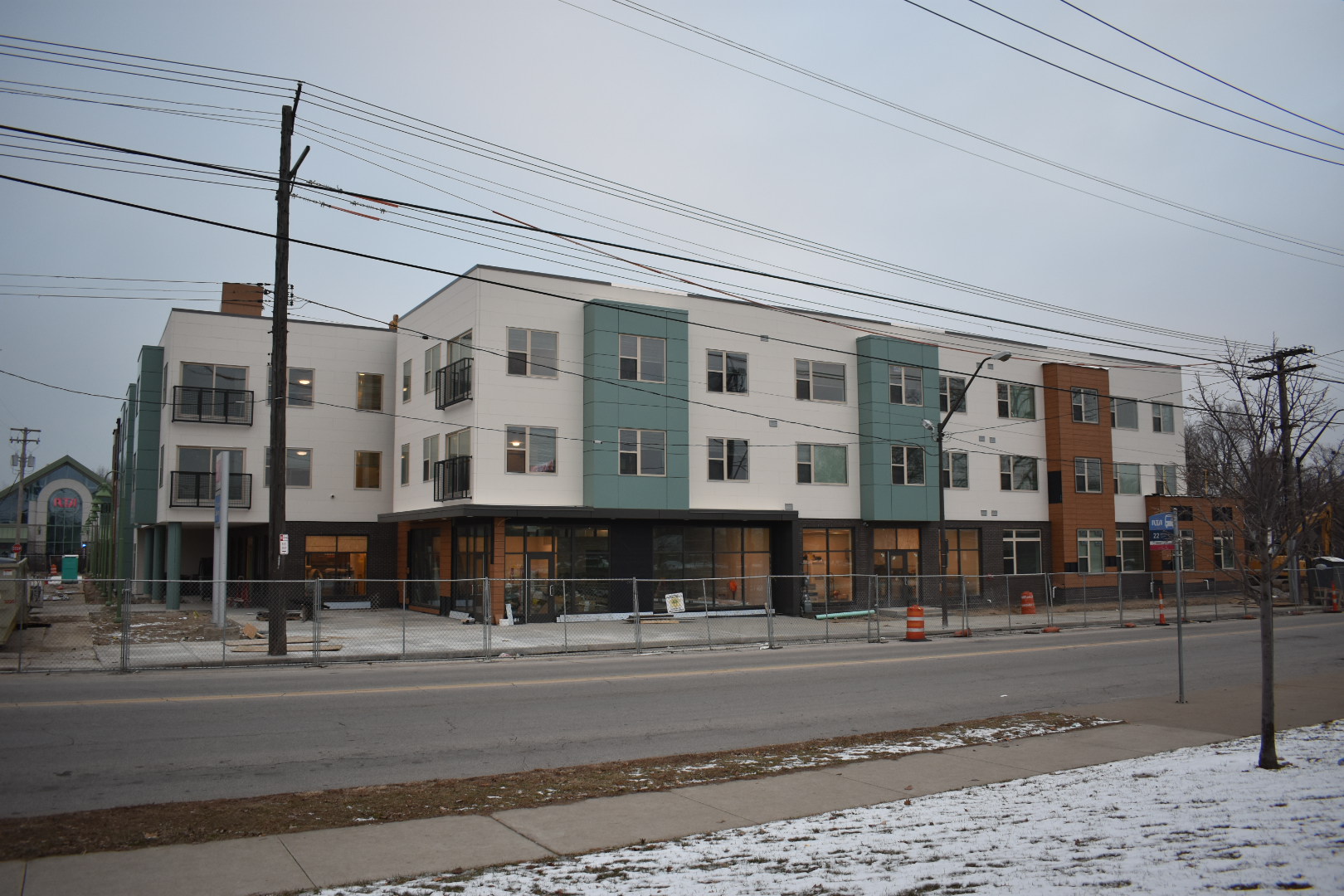
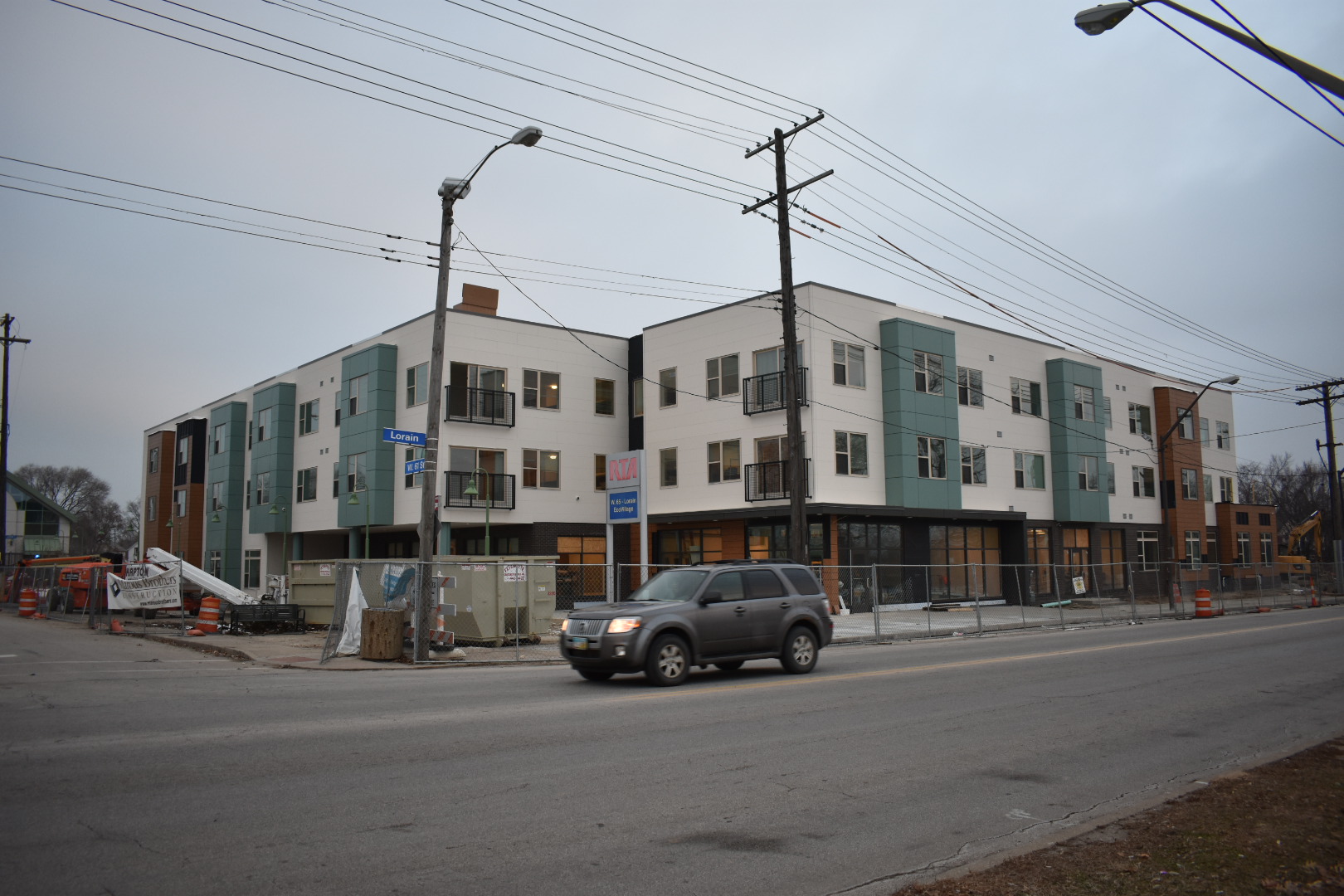
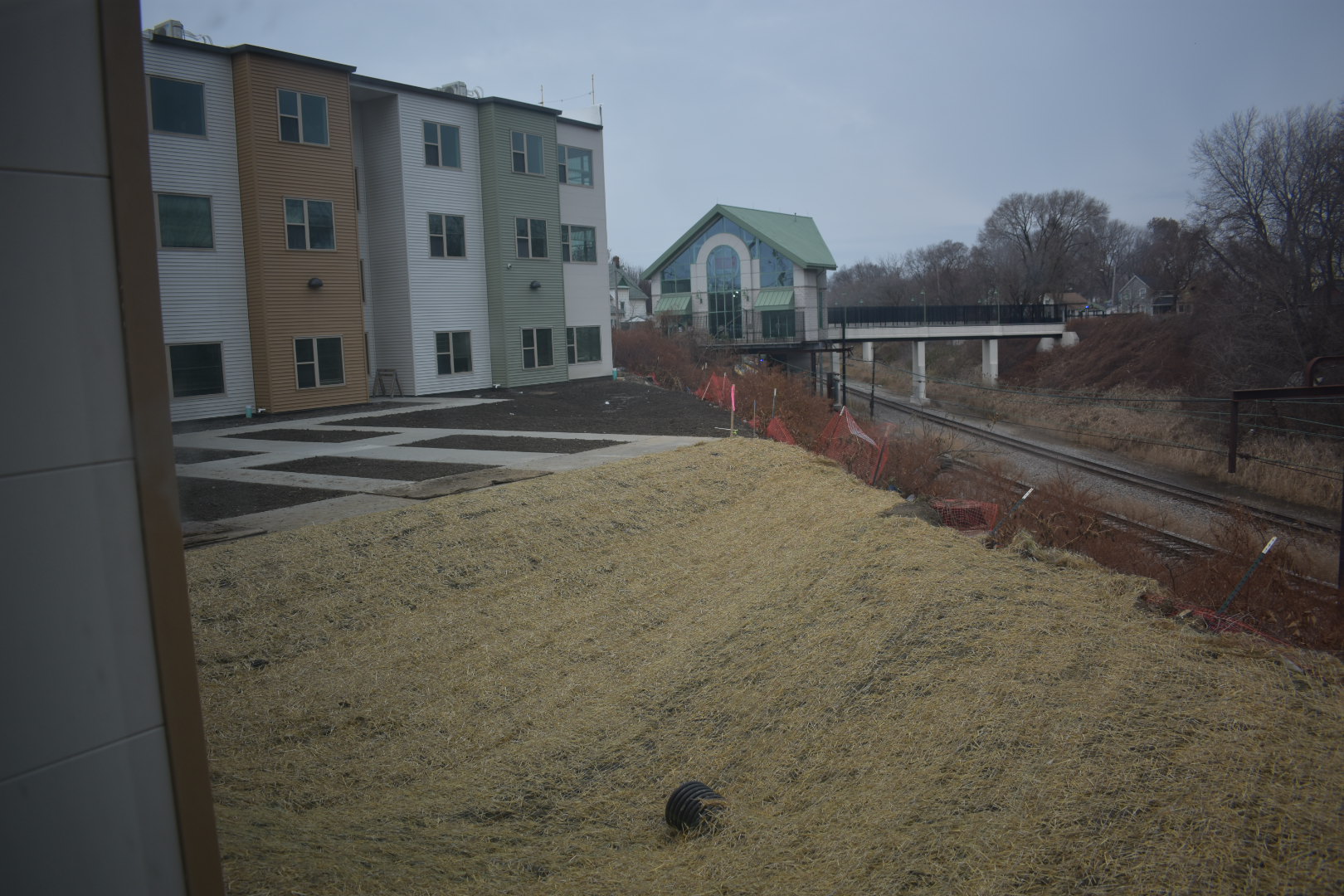
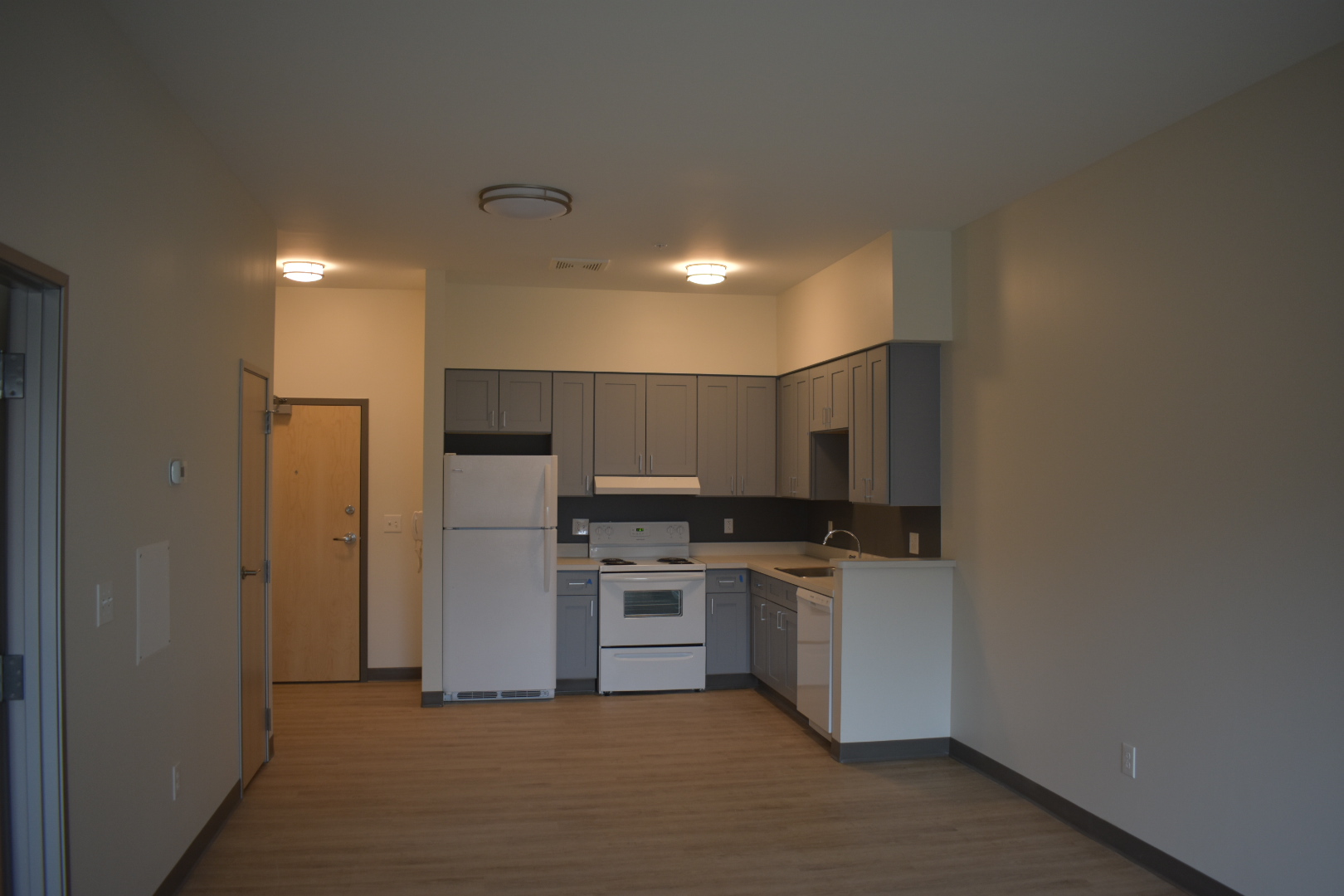
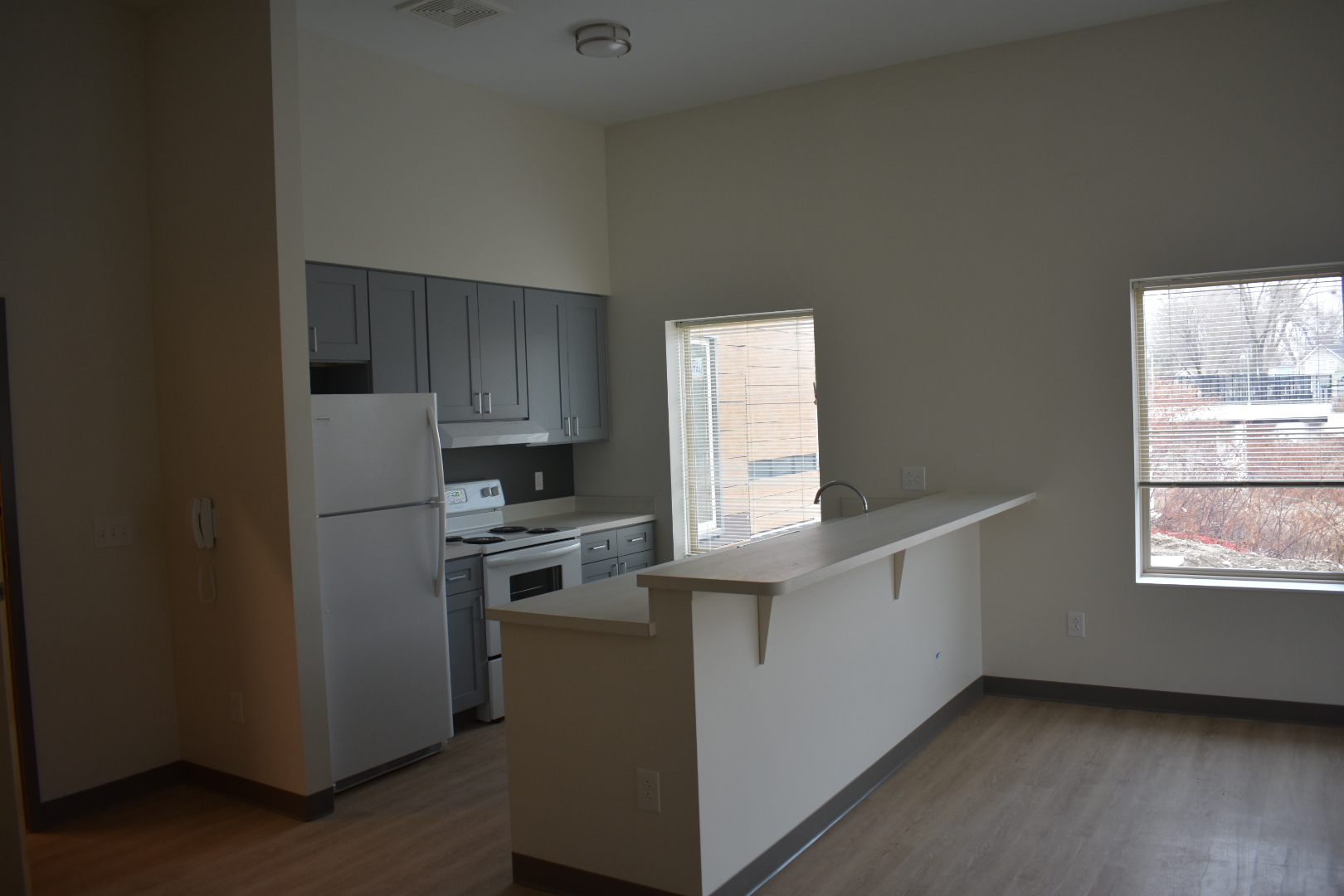
See GOPC six-part series Getting Ohio to Work: Reaching Opportunity through Public Transportation here. To read more about GOPC research and advocacy on the need for transit statewide, visit https://www.greaterohio.org/fueling-innovation/
New GOPC Study Finds Strong Potential in Innovative Neighborhood Revitalization Pilot
Greater Ohio Policy Center today releases an independent analysis of an innovative model for neighborhood recovery being piloted in a Cleveland neighborhood, finding promising results for this block-by-block holistic approach to revitalization that combines demolition and rehabilitation.

Slavic Village, a neighborhood located 6 miles south of downtown Cleveland, represents many of the strengths and challenges that characterize our historic urban communities. An intact neighborhood with a rich cultural history and strong community institutions, it also experienced the highest foreclosure rate in the country in 2008, and increasing rates of poverty and unemployment.
Based on 2014 analysis, the GOPC study, Documenting the Slavic Village Recovery Project: An Early Review of a Model for Neighborhood Revitalization in Cleveland, Ohio, released in conjunction with the Slavic Village Recovery, LLC, (SVR) finds preliminary results for the SVR Project, including:
- Sales prices of the initial homes reached the targeted amount necessary to cover rehab costs and make a small $5,000-$10,000 profit; received an appraisal value above the listed $60,000 sale price; and sold quickly.
- Neighborhood morale is high and neighbors are positive about the project.
- Investment is taking place in the neighborhood apart from direct involvement with SVR, suggesting, perhaps, that SVR’s private sector partners created market confidence for new businesses and city and regional governments.
The Study also noted several keys to SVR’s early successes:
- A holistic approach to community development and a clear comprehensive plan, strategically linking demolition and rehabilitation.
- A focus on properties with value and the strong relationships needed to acquire properties from REO lists and banks
- A philanthropic mission paired with a for-profit approach in executing the mission
Based on the data available to date, GOPC finds aspects of this Project potentially adaptable to other neighborhoods in other cities, although the context for replication is important. Several key factors, such as a pipeline of available properties, must be present for replication and those interested in duplicating the model may need to take the time to get these factors in place first in order to be successful.
Recognizing the opportunity to stabilize and revitalize this still vital area, four partners—two non-profit and two for-profit organizations—came together in 2013 to create Slavic Village Recovery, LLC. SVR aims to eradicate blight entirely from a targeted area in the neighborhood and thus reach a positive tipping point one block at a time. SVR combines strategic demolition with housing rehabilitation, as well as resident support services, with the goal of achieving comprehensive redevelopment.
For more information on the progress and impact of Slavic Village Recovery, please click here to see our full assessment.
Waterfront Development Projects in Ohio's Major Cities
By Octavious Singleton, GOPC Intern, and Marianne Eppig, Manager of Research & Communications Ohio’s three largest cities—Cleveland, Columbus, and Cincinnati—have devised strategic urban developments geared toward revamping their waterfronts, with aspirations of boosting local quality of life and economic growth.
Cleveland - Lakefront Development Plan
This past June, Cleveland City Council approved legislation for its long-anticipated lakefront development project. The primary objective is to enhance accessibility of the city’s waterfront.
Dick Pace of Cumberland TCC, LCC, the developer, is expected to build about 1,000 apartments, 80,000 square feet of commercial office space, and 40,000 square feet of retail and restaurant space on 21 acres of the lakefront. The construction will occur in phases so that each section of the new development complements construction taking place in the downtown.
The plan capitalizes on existing anchor institutions, such as the Rock and Roll Hall of Fame, the Great Lakes Science Museum, and the Browns stadium, to attract visitors to the lake and leaves space for future development—such as hotels, restaurants, and shops—as the phases of the project advance over time. While the city is funding portions of the project with public funds, the hope is that private investors will be drawn to the area and develop along the lakefront once the infrastructure is in place.
To accommodate affordable housing, Pace said that local public servants, such as teachers and police officers, who wish to live in the neighborhood will be granted reduced rent. He also mentioned that the project will honor a Community Benefits Agreement that assures that Pace will employ local apprentices from Cleveland’s Max Hayes High School and give homegrown firms a chance to work on the project.
Cleveland’s lakefront development project is strategically devised to generate more revenue, attract businesses, promote exposure, boost local quality of life, and increase the volume of tourism in the city.
Columbus - Scioto Greenways Project
Planning for the redevelopment of Columbus’ downtown riverfront has been underway for the past two decades, with exciting progress taking place within the last several years. In April of 2012, the City of Columbus and Franklin County—which are major land owners on the Scioto Peninsula—asked the Columbus Downtown Development Corporation to develop a strategic land use plan for the peninsula. The idea of the Scioto Greenways project was first introduced during the public process leading up to the generation of the 2010 Downtown Strategic Plan.
The Scioto Greenways project, which is estimated to cost $35.5 million and is being funded by numerous public and private partners, involves three primary components that will revamp the area around the river. Those three components are:
- removing the Main Street Dam,
- restoring the Scioto River channel, and
- creating 33 acres of new green space.
The Main Street Dam was removed in late 2013, restoring the natural flow of the river and improving the ecological systems and river habitat. The riverbanks and river channel are currently under construction, but once they are completed, they will provide new recreation options and the opportunity to build upon existing investments in the area through the creation of a stunning 33-acre greenway through downtown Columbus.
This project will better connect Downtown Columbus to the Scioto Peninsula and East Franklinton by expanding on recent park investment, creating links to the existing regional bikeway system, and catalyzing further private investment in the urban core.
Cincinnati - The Banks
Downtown Cincinnati’s riverfront between the Great American Ball Park and Paul Brown Stadium is in the midst of a transformation. The Banks development project is turning 18 acres of undeveloped riverfront land along the Ohio River into a dynamic mixed-use "Live, Work, Play" destination.
The Banks project is part of a riverfront strategic development plan that was originally unveiled in the ‘90s. The development will incorporate residential units, office space, as well as dining, leisure and entertainment venues and will connect Cincinnati’s downtown to the waterfront via a 45-acre Riverfront Park.
Atlanta-based companies Carter and The Dawson Company, along with their capital partner USAA Real Estate Company, have been leading the development as a joint venture since 2007. The City of Cincinnati partnered with Hamilton County to provide infrastructure for the site, including a multi-modal transit facility, parking garages, street grid improvements, and utilities.
In late 2009, Phase I construction began by adding luxury apartments and street-level restaurants that opened in 2011, and further street-level retail that opened throughout 2012 and 2013. Ongoing development, which will include more residential, retail, hotel and office sites, will be completed in phases throughout a ten to fifteen year time frame.
The project is expected to add around $600 million in investment and around 1,000 permanent jobs to the local economy, according to a recent study. Already, the development is attracting new national retailers and residents to Cincinnati, which demonstrates the power of waterfront redevelopment as an asset for local quality of life and economic growth.
The waterfront revitalization projects in Cleveland, Columbus and Cincinnati are expected to increase property values, encourage private investment, and contribute to vibrant communities, while improving connectivity between these cities and their beautiful water assets.







